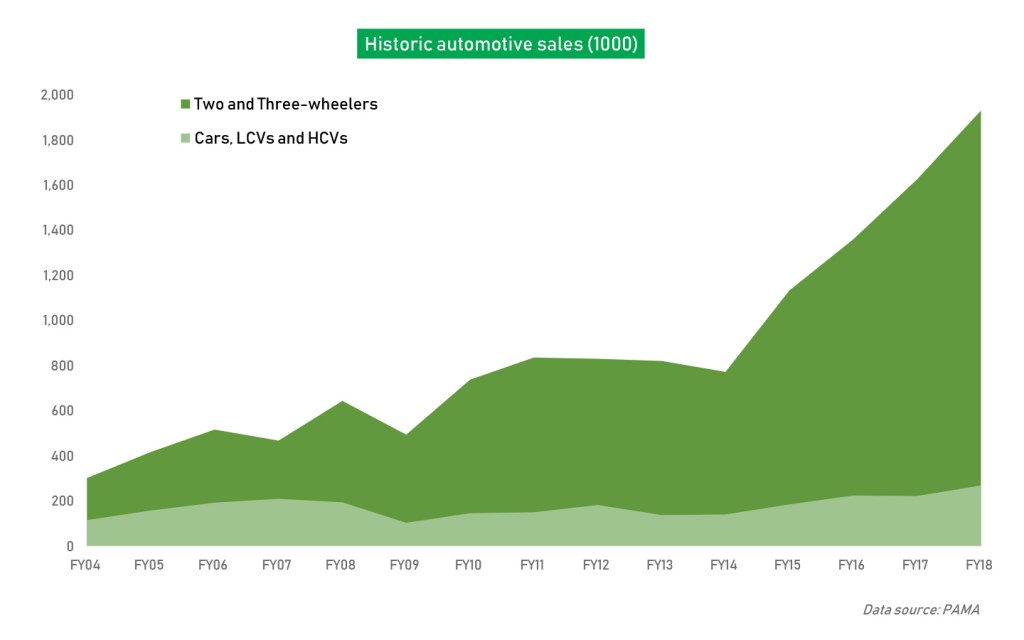Possibly, one of the most common characteristics of burgeoning cities is crippling traffic congestions, which in many cases is worsened by poor traffic management and lack of policy foresight. In Pakistan, particularly in major cities such as Karachi and Lahore, multiple factors have led to the recurrent, almost daily gridlocks on the roads.
Population growth, migration of larger population to urban centers, increased motorization, and shortage of public mass transit are some of the most common reasons for heavy traffic flows. The rise in population and rural to urban migration in Pakistan are well-documented. It is also common knowledge that—aside from the latest flurry of activity in the public transit area, boosted by mega bus rapid transit (BRT) or metro bus projects, as well as startups like Airlift and Swvl—Pakistani cities have long suffered from a lack of public means of transport. This has led to a rise in the usage of rickshaws, QINGQIs and motorcycles, and also resulted in a massive increase in car purchases until recently.

A study conducted by an NED research team, and funded by the carmaker, Indus Motors Company calculated the traffic volumes in Karachi during peak hours to be 3500 vehicles per hour, even though the current road capacity allows for only 3400 vehicles per hour on the road. This is exacerbated by road encroachments and absence of laws that regulate car parking. According to the same study, an average delay of 13 minutes was recorded in free-flowing traffic per trip. Moreover, a 2013 study estimated that the cost of traffic congestion in Karachi was $688 million annually.
Naturally, when the number of vehicles on the road goes up, it causes traffic congestions which in turn degrades the road infrastructure, causes noise and air pollution, and ends up costing road users in fuel costs and in terms of lost time. Thus, aside from being a nuisance, there is also an economic cost to traffic jams.
Commonly, policies to control traffic involve widening roads, attempts to curb encroachment (which, lately, has been on the agenda of Karachi administrators), and constructing high occupancy vehicle (HOV) lanes, planned foot over-bridges, underpasses as well as U-turns. There are also smart technology solutions such as installing intelligent traffic signals that adapt to the flow of traffic, and route guidance systems that enable drivers to track traffic patterns in advance.
However, research suggests that widening roads or building new ones actually causes traffic to increase proportionally—which is why investment in roads may not be as worthwhile since, roads induce demand to travel.
Of course, this theory may not be plausible when it comes to the dilapidated state of roads in a city like Karachi. However, other well-crafted interventions are necessary. Since, public transit projects as well as most smart city solutions require hefty investment, economists argue that road pricing can play a pivotal role in addressing the traffic problem as not only does it provide a source of funding for these projects but also relieves congestion by discouraging the demand for travel.
While it is true that commuters prefer travelling on private vehicles, especially in the cities of Pakistan, the high costs of private transportation, however, often make them think twice. As a matter of fact, when more commuters travel by bus, public transport projects would also be able to meet their ridership targets—something Islamabad metro is struggling with right now—thereby, becoming financially viable and afloat.



